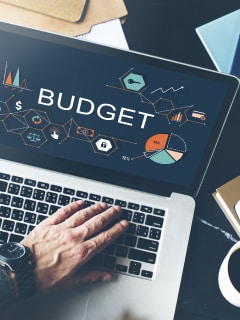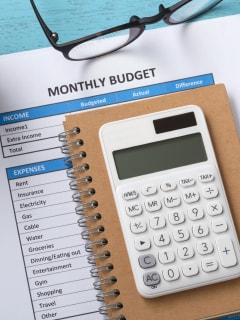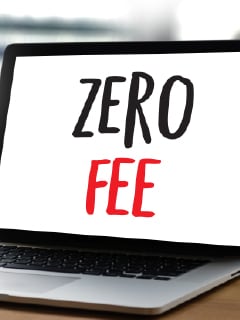CKYC Registry
-
Customer Service Contact us Service request Locate a branch
Find all the help you need
Scan the QR, get our app, and find help on your fingertips

Help CenterSupport topics, Contact us, FAQs and more
-
Login
Are you ready for an upgrade?
Login to the new experience with best features and services
-
Login
Are you ready for an upgrade?
Login to the new experience with best features and services
- Accounts
-
Deposits
IDFC FIRST Bank Deposits
View all Deposits -
Loans
IDFC FIRST Bank Loans
View all Loans - Wealth & Insure
-
Payments
IDFC FIRST Bank Payments
View all Payments -
Cards
IDFC FIRST Bank Cards
View all Cards - Blogs
- Corporate Account
-
Cash Management Services
IDFC FIRST Bank Cash Management Services
View all Cash Management Services - Supply Chain Finance
-
Corporate Lending
IDFC FIRST Bank Lending
View all -
Treasury
IDFC FIRST Bank Treasury
See more details - NBFC Financing
Support topics, Contact us, FAQs and more
- IDFC FIRST Bank Accounts
-
Savings Account
-
Corporate Salary
Account -
Senior Citizens
Savings Account -
First Power
Account -
Current Account
-
NRI Savings
Account -
TASC Institutional
Account -
Savings Account
Interest Calculator
- IDFC FIRST Bank Deposits
-
Fixed Deposit
-
Recurring Deposit
-
NRI Fixed Deposit
-
Safe Deposit Locker
-
FD Calculator
-
RD Calculator
- IDFC FIRST Bank Loans
-
Personal Loan
-
Consumer Durable
Loan -
Home Loan
-
Business Loan
-
Professional Loan
-
Education Loan
-
New Car Loan
-
Pre-owned Car Loan
-
Two Wheeler Loan
-
Pre-owned Two
Wheeler Loan -
Commercial Vehicle
Loan -
Gold Loan
-
Loan Against Property
-
Loan Against Securities
-
Easy Buy EMI card
-
Personal Loan
EMI Calculator -
Education Loan
EMI Calculator -
Home Loan
EMI Calculator
- IDFC FIRST Bank Wealth & Insure
-
FIRST Select
-
FIRST Wealth
-
FIRST Private
-
Mutual Funds
-
Sovereign Gold Bond
-
Demat Account
-
Term Insurance
-
Life Insurance
-
Health Insurance
-
General Insurance
-
Bonds
-
Loan Against
Securities -
Portfolio Management
Service
- IDFC FIRST Bank Payments
-
FASTag
-
Credit Card
Bill Payments -
UPI
-
Funds Transfer
-
Forex Services
-
Pay Loan EMI
- IDFC FIRST Bank Cards
-
Ashva :
Metal Credit Card -
Mayura :
Metal Credit Card -
FIRST Millennia
Credit Card -
FIRST Classic
Credit Card -
FIRST Select
Credit Card -
FIRST Wealth
Credit Card -
FIRST WOW!
Credit Card -
Deals
-
Debit Cards
-
Co-branded Cards
-
Credit Card
EMI Calculator -
FIRST Corporate
Credit Card -
FIRST Purchase
Credit Card -
FIRST Business
Credit Card
- Premium Metal Credit Cards
-
AshvaLifestyle1% Forex₹2,999
-
MayuraLifestyleZero Forex₹5,999
-
FIRST PrivateInvite Only
- Best for travellers
-
MayuraZero ForexMetal₹5,999
-
Ashva1% ForexMetal₹2,999
-
FIRST WOW!Zero ForexTravelLifetime Free
-
FIRST SWYPTravel OffersEMI₹499
-
FIRST Select1.99% ForexLifestyleLifetime Free
-
FIRST Wealth1.5% ForexLifestyleLifetime Free
-
Club VistaraTravelLifestyle₹4,999
-
IndiGo IDFC FIRST Dual Credit CardTravelLifestyle₹4,999
- Max benefits, Free for life
-
FIRST Classic10X RewardsShoppingNever Expiring Rewards
-
FIRST Millennia10X RewardsShoppingNever Expiring Rewards
-
FIRST Select10X RewardsLifestyle1.99% Forex
-
FIRST Wealth10X RewardsLifestyle1.5% Forex
-
FIRST WOW!RewardsTravelZero Forex
-
LIC ClassicRewardsInsuranceShopping
-
LIC SelectRewardsInsuranceShopping
- Reward Multipliers
-
AshvaLifestyleMetal₹2,999
-
MayuraLifestyleZero Forex₹5,999
-
FIRST ClassicNever Expiring RewardsShoppingLifetime Free
-
FIRST MillenniaNever Expiring RewardsShoppingLifetime Free
-
FIRST SelectNever Expiring RewardsLifestyleLifetime Free
-
FIRST WealthNever Expiring RewardsLifestyleLifetime Free
- Rewards & Credit on UPI
-
FIRST Power+FuelUPI₹499
-
FIRST PowerFuelUPI₹199
-
FIRST EA₹NVirtual1% Cashback₹499
-
FIRST DigitalVirtualUPI₹199
-
IndiGo IDFC FIRST Dual Credit CardUPITravelDual cards
- Fuel and Savings
-
FIRST PowerRewardsUPI₹199
-
FIRST Power+RewardsUPI₹499
-
LIC ClassicRewardsInsuranceShopping
-
LIC SelectRewardsInsuranceShopping
- Express and Flaunt
-
AshvaMetal1% Forex₹2,999
-
MayuraMetalZero Forex₹5,999
-
FIRST SWYPEMIOfferMAX₹499
-
FIRST MillenniaRewardsShoppingLifetime Free
- FD Backed rewarding Credit Cards for all
-
FIRST EA₹NVirtualCashback₹499
-
FIRST WOW!Zero ForexTravelLifetime Free
-
CreditPro Balance TransferTransfer & SaveReduce InterestPay Smartly
- IDFC FIRST Bank NRI Forex Solutions
-
Send money to India-Wire transfer
-
Send money to India-Digitally
-
Send money abroad
-
Max Returns FD (INR)
- IDFC FIRST Bank MSME Accounts
-
Platinum Current
Account -
Gold
Current Account -
Silver Plus
Current Account -
Merchant Multiplier
Account -
Agri Multiplier
Account -
TASC Institutional
Account -
Dynamic Current
Account -
World business
Account -
First Startup
Current Account
- IDFC FIRST Bank Business Loans
-
Business Loan
-
Professional Loan
-
Loan Against Property
-
Business Loan for Women
-
Working Capital Loan
-
Construction Equipment Loan
-
Machinery Loan
-
Healthcare Equipment Loan
- IDFC FIRST Bank Business Solutions
-
Payment Solutions
-
Tax Payments
-
Doorstep Banking
-
Point of Sale (POS)
-
Escrow Accounts
-
NACH
-
Payment Gateway
-
UPI
-
Virtual Accounts
-
As per amendment in the Income Tax Rules, PAN or Aadhaar are to be mandatorily quoted for cash deposit or withdrawal aggregating to Rupees twenty lakhs or more in a FY. Please update your PAN or Aadhaar. Kindly reach out to the Bank’s contact center on 1800 10 888 or visit the nearest IDFC FIRST Bank branch for further queries.
-
-
Most Searched
Sorry!
We couldn’t find ‘’ in our website
Here is what you can do :
- Try checking the spelling and search
- Search from below suggestions instead
- Widen your search & try a more generic keyword
Suggested
Get a Credit Card
Enjoy Zero Charges on All Commonly Used Savings Account Services
Open Account Now
Money management is a simple yet effective concept that can help you stay on top of your finances. But it continues to remain elusive for many as they struggle to apply it to their daily lives. They often find it difficult to understand where to draw the line when demarcating their needs and wants.
It is vital to strike the right balance between needs and wants and account for them separately. Not doing so may impact you adversely and affect other long-term financial goals as well. Here is a detailed guide into what constitutes your needs and aspirations/wants and how to budget for them effectively.
What are Needs?
Needs are basic requirements without which life cannot be sustained. Simply put, all expenses that support your survival (food, clothes, housing, transportation, insurance, electricity) can be termed as needs. They are indispensable and remain constant always. Today, access to healthcare and education are also considered important needs and have become an integral part of our lives.
What are Wants?
Wants are things or experiences that you crave or allow you to live life in greater comfort. Any expense that doesn’t directly impact your survival can be safely clubbed under wants. Examples include leisure travel, club/gym memberships, Netflix or other streaming service subscriptions, trendy apparel, gadgets, etc. You can survive without wants, which are optional expenses.
While there is a distinct line separating needs and wants, a grey area remains. For example, if your job requires you to commute to big organisations, meet HNIs or the like and drive high net worth clients around, then sure, a big and expensive car may well fulfil a need. The reverse holds true as well. You may think that having food outside is meeting a need (satiating hunger), but packing lunch from home will accomplish this at a much lower cost. So, eating at a restaurant is more of a want.
READ MORE
How to Distinguish Between Needs and Wants
As you learn to differentiate between your needs and wants, you start to exercise control over unnecessary spending and take charge of your financial situation. The below exercise will not only help you identify the areas of comparison between needs and wants but also answer the question how to manage money better.
Basis of Comparison |
Needs |
Wants |
Meaning |
Necessary to lead a healthy life. |
Not necessary to live life but provide comfort. |
Survival |
Essential for survival. |
Non-essential for survival. |
Nature |
Limited - can count on fingertips. |
Unlimited - can go on endlessly. |
Depicts |
Necessity |
Desires |
State |
Remain constant most of the time - the basic things required for survival hardly change. |
Remain unsteady most of the time - can change from year to year, month to month, or even day to day. |
The above table highlights the key differences between needs and wants. But why do people have a hard time classifying their needs and wants separately and go overboard with their expenses? Well, as mentioned earlier, there is a grey area that may be tough to navigate. It is completely upon the individual to decide if their ‘need’ turns out to be a ‘want’ in reality.
It is best to do the exercise by listing out all your expenses and classifying them as needs and wants as you go along. Put a tick in the appropriate column.
Type of expense |
Need |
Want |
Groceries |
|
|
Meals at restaurants |
|
|
Clothes |
|
|
Designer clothes |
|
|
Car insurance |
|
|
New car seats |
|
|
OTT subscriptions |
|
|
Mobile recharge |
|
|
Pet food |
|
|
Pet spa |
|
|
Full health check-up |
|
|
Visits to naturopathy centres or yoga retreats |
|
|
Again, be aware that certain items you classify as ‘wants’ may be on someone’s ‘needs’ list. It is a subjective decision that needs to be taken after a careful analysis of your monthly income. Having said that, try not to spill your wants into the needs domain. This can unknowingly land you into financial trouble sooner or later.
How to Budget for Needs and Wants
Ask a financial expert how to create a financial plan that aligns with your long-term and short-term goals. At the outset, most would recommend creating a budget for your needs and wants. But how can you go about this? The popular 50-30-20 rule of budgeting is probably one of the best tools to create a budget based on your needs and wants.
The rule states that out of your total income:
- 50% should go towards meeting your needs
- 30% should go towards your wants
- 20% should go towards your savings
It’s as straightforward as that!
Let's understand this better with the help of an example. Create a pie chart of your total expenditure - something like the accompanying illustration, where 58% of the income goes to fulfil needs, 40% to meet wants, and a meagre 2% towards savings. The overall scenario doesn’t look good, as way too much is being spent on needs and wants, almost completely ignoring savings.
Of course, this percentage breakup could differ from person to person. Also, it can vary depending on certain additional expenditures that may crop up during a particular month. For example, you may be planning to celebrate a loved one's upcoming birthday, which can increase your expenses for that month.
Continuing with the above example, it's time to make category-wise adjustments to arrive at a suitable budget that can help you meet your financial goals.
- Classify Expenses Properly: Look closely and move expenses around. Do you really need to go on vacation twice a year? No, you don’t. Classify it as a want. Considering you are already going overboard with your expenses in the ‘wants’ section, you may want to restrict your travel or forgo it for the upcoming year. In short, what you may feel is a need could be a want.
- Reduce Necessary Expenses: Trim your ‘needs’ expenses by opting for cheaper options. For example, seek better insurance options that provide you with more coverage at a lower premium. This can cut expenses that are necessary but still open to downsizing.
- Open the Best Savings Account: Having a savings account will help you systematically save money. IDFC FIRST Bank offers the best savings account that will not only help you save your surplus funds but also promise comparatively higher savings account interest rates.
- Trim Expenses on Wants: Similarly, cut down expenses in the ‘wants’ section by being prudent with your monthly expenses. For instance, you could limit dining out, watching movies at the theatre and impulse shopping.
Enabling Better Money Management
You may occasionally feel pulled in all directions as you go about satisfying your needs and aspirations, with little or no scope to account for future expenses. Revisit the 50-30-20 rule and cut back wherever possible. Remember, the whole exercise is to help you limit your needs, practice control over your wants, and save for your future life and that of your loved ones.
IDFC FIRST Bank helps you save prudently with the help of the best savings account. It lets you earn interest at attractive rates, along with monthly interest credits, free and unlimited ATM withdrawals, and much more.
You can open two types of accounts with IDFC FIRST Bank:
- Minimum average monthly balance of ₹25,000 - comes with a World Debit Mastercard® card
- Minimum average monthly balance of Rs 10,000 - comes with a Visa Classic Debit Card
With additional benefits such as complimentary airport lounge access andpersonal accidental and death cover, an IDFC FIRST Bank debit card gives you access to some incomparable features. Get in touch with us today to understand the benefits of opening a savings account with IDFC FIRST Bank!


Your score
/10
You are on the right track!
Here are some resources to perfect your budgeting skills:


Your score
/10
Great job! Keep pushing to reach your financial goals.
Here are some resources to perfect your budgeting skills:


Your score
/10
Congrats! You scored a perfect 10!
Here are some resources to improve your financial know-how:
Disclaimer
The contents of this article/infographic/picture/video are meant solely for information purposes. The contents are generic in nature and for informational purposes only. It is not a substitute for specific advice in your own circumstances. The information is subject to updation, completion, revision, verification and amendment and the same may change materially. The information is not intended for distribution or use by any person in any jurisdiction where such distribution or use would be contrary to law or regulation or would subject IDFC FIRST Bank or its affiliates to any licensing or registration requirements. IDFC FIRST Bank shall not be responsible for any direct/indirect loss or liability incurred by the reader for taking any financial decisions based on the contents and information mentioned. Please consult your financial advisor before making any financial decision.
The features, benefits and offers mentioned in the article are applicable as on the day of publication of this blog and is subject to change without notice. The contents herein are also subject to other product specific terms and conditions and any third party terms and conditions, as applicable. Please refer our website www.idfcfirstbank.com for latest updates.






























